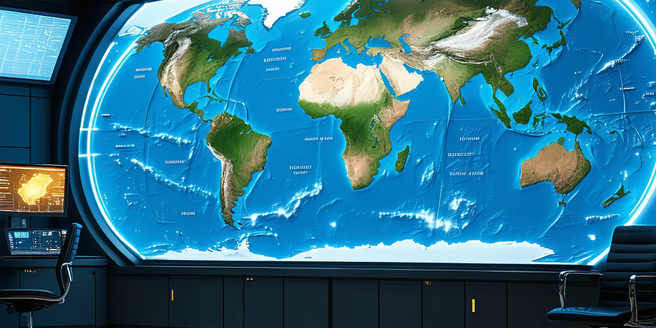
The Origins and Early Developments
The origins of numerical weather prediction (NWP) trace back to the early 20th century when scientists first realized that the atmosphere could be described by a set of mathematical equations. Vilhelm Bjerknes, a Norwegian physicist, laid the foundations by proposing that weather prediction could be achieved using hydrodynamic and thermodynamic equations. During the 1920s, British scientist Lewis Fry Richardson made the first attempt to apply these equations numerically, albeit manually, resulting in a forecast that took weeks to compute. Despite the initial shortcomings, Richardson’s work sowed the seeds for future developments. With advancements in computer technology after World War II, these early conceptual ideas became more feasible, leading to the establishment of meteorological centers dedicated to research and development in numerical prediction by the mid-20th century.
Key Figures and Their Contributions
The field of numerical weather prediction owes much to the efforts of key figures who made significant contributions. One of the most notable is Jule Gregory Charney, an American meteorologist, who, in the late 1940s, spearheaded the development of practical NWP techniques. His collaboration with John von Neumann and the team at the Institute for Advanced Study led to the first successful computerized weather forecast in 1950. Another prominent figure is Edward Lorenz, whose work in the 1960s on chaos theory revealed the sensitive dependence on initial conditions, coining the term ‘butterfly effect.’ This insight revolutionized understanding of atmospheric dynamics and improved prediction models. These pioneers, among others, have laid the groundwork for modern weather prediction, enabling forecasts that are now an integral part of daily life.
Technological Advancements in NWP
Technological advancements have played a crucial role in the evolution of numerical weather prediction. The introduction of high-performance computing systems has enabled meteorologists to solve complex equations more efficiently, leading to more accurate and timely forecasts. Satellite technology, which became prominent in the latter half of the 20th century, provides essential data on atmospheric conditions over oceans and remote areas. Additionally, Doppler radar systems have enhanced real-time monitoring of precipitation and severe weather events. The integration of these technologies with sophisticated numerical models has significantly improved the precision of predictions. Today, advanced algorithms and machine learning techniques are further refining model outputs, ensuring that NWP continues to evolve and meet the growing demands for precise weather information.
Challenges Faced in Meteorological Modeling
Despite significant advances, numerical weather prediction models still face several challenges. One primary issue is the inherent uncertainty due to initial condition limitations. The chaotic nature of the atmosphere means that small errors in data can grow rapidly, leading to inaccurate forecasts. Efforts are being made to integrate more real-time data to enhance model accuracy and reliability. Additionally, accurately representing complex physical processes such as cloud formation, precipitation, and turbulence remains difficult in current models. There are also challenges in assimilating observational data effectively into models, particularly in regions with sparse data coverage. Furthermore, as computational demands increase, balancing model resolution against available computing resources becomes critical. Overcoming these challenges requires continuous research, advancement in computational methods, and improved data collection techniques.
The Future of Numerical Weather Prediction
The future of numerical weather prediction holds promising developments as technology continues to advance. Improved computational power and data assimilation techniques are expected to enhance the accuracy and resolution of weather models. The incorporation of artificial intelligence and machine learning is poised to revolutionize the field, allowing for better pattern recognition and anomaly detection in atmospheric data. Advancements in remote sensing, with new satellite missions, will provide higher-quality data with global coverage. Efforts to increase international collaboration will enhance data sharing and model development, addressing gaps in regional capabilities. These innovations will enable more precise and reliable forecasts, improving preparedness for extreme weather events and aiding various sectors that rely on meteorological information.
